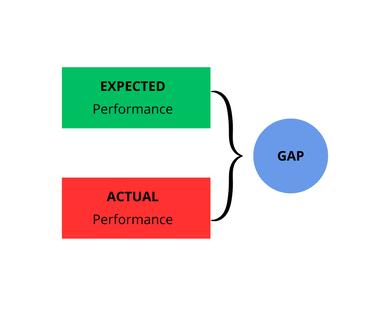How to confidently manage poor performance|step by step guide
As a small to medium business owner, you pride yourself on running a tight ship. You have high expectations of your team, and you know that their performance can make or break your business.
But what happens when someone on your team is not performing?
Poor performance can have serious consequences for your business, from decreased productivity and revenue to negative impacts on customer service and team morale.
As an experienced HR consultant, I have seen first-hand the damage that poor performance can cause. In this How-To-Guide, I will guide you through the process of dealing with poor performance, step-by-step, to help you get your team back on track and achieve the results you need.
But what happens when someone on your team is not performing?
Poor performance can have serious consequences for your business, from decreased productivity and revenue to negative impacts on customer service and team morale.
As an experienced HR consultant, I have seen first-hand the damage that poor performance can cause. In this How-To-Guide, I will guide you through the process of dealing with poor performance, step-by-step, to help you get your team back on track and achieve the results you need.
What is poor performance?
Poor performance is when an employee is not meeting the standards set for their role, whether that be in terms of quality, productivity, or customer service.
This can take many forms, from consistently missing deadlines to making mistakes that impact the business.
Poor performance occurs when there is a gap between the employee’s actual performance and the standard of performance you expect from them.
This can take many forms, from consistently missing deadlines to making mistakes that impact the business.
Poor performance occurs when there is a gap between the employee’s actual performance and the standard of performance you expect from them.
Reasons for poor performance
There are many reasons for poor performance, but most of them can be grouped within the following categories:
Why think about this.......because establishing the root cause of the performance problem will help you develop effective solutions to improve performance.
Knowledge
Employees may lack the knowledge to perform their role effectively. This knowledge is generally gained through effective onboarding, training, coaching, and experience.
Tools, equipment, and resources
A lack of the necessary tools, equipment and resources can inhibit an employee from performing well in their role. This can even happen with a high performer.
Skills
A person may not perform well in their role due to a lack of skills. Skills are developed through the application of knowledge, practice, and experience. Managers should ensure that they are recruiting employees with the relevant skills or coaching, training and mentoring a less experienced employee who needs to develop their skills.
If a person’s role changes or they are promoted, they may require training to develop new skills.
Desire or will
Sometimes an employee has the necessary knowledge, skills and resources to perform well in a role, but they may lack the desire or will to perform as a result of being disengaged.
This can result from various reasons such as a lack of meaningful work, boredom, a personal reason, lack of role clarity or connection to the organisation’s objectives or dissatisfaction with their manager or a co-worker.
Expectations
A person may not perform to the desired expectations if those expectations have not been clearly communicated or understood.
Employees may lack the knowledge to perform their role effectively. This knowledge is generally gained through effective onboarding, training, coaching, and experience.
Tools, equipment, and resources
A lack of the necessary tools, equipment and resources can inhibit an employee from performing well in their role. This can even happen with a high performer.
Skills
A person may not perform well in their role due to a lack of skills. Skills are developed through the application of knowledge, practice, and experience. Managers should ensure that they are recruiting employees with the relevant skills or coaching, training and mentoring a less experienced employee who needs to develop their skills.
If a person’s role changes or they are promoted, they may require training to develop new skills.
Desire or will
Sometimes an employee has the necessary knowledge, skills and resources to perform well in a role, but they may lack the desire or will to perform as a result of being disengaged.
This can result from various reasons such as a lack of meaningful work, boredom, a personal reason, lack of role clarity or connection to the organisation’s objectives or dissatisfaction with their manager or a co-worker.
Expectations
A person may not perform to the desired expectations if those expectations have not been clearly communicated or understood.
What problems are caused if an employee is not performing?
When an employee is not performing up to par, it can have serious consequences for your business.
These include:
These include:
- Decreased productivity: When one team member is not performing, it can impact the productivity of the entire team.
- Decreased revenue: Poor performance can lead to lost sales, missed opportunities, and decreased revenue.
- Negative impact on customer service: Poor performance can result in unhappy customers, negative reviews, and a damaged reputation.
- Negative impact on team morale: When one team member is not performing, it can impact the morale of the entire team.
- Increased workload and stress for managers: When managers have to constantly address poor performance, it can take up a significant amount of time and resources.
Why managers often avoid dealing with poor performance?
Despite the negative consequences of poor performance, many managers avoid dealing with it. There are a few reasons for this, including:
Did you know? 94% of employees want to hear corrective feedback. Corrective feedback helps them improve how they work.
As such, it is important to be honest and direct with what you say. Uncertainty does not allow for progression or corrective behaviour. It simply means employees are aware of problems but are not quite sure how to solve them.
50% of employees are uncertain of their goals and much of this uncertainty arises from a lack of feedback and direction.
- Fear of conflict: Addressing poor performance can be uncomfortable and may result in conflict, which some managers try to avoid.
- Lack of time: Addressing poor performance can take time and resources, which some managers may not feel they have.
- Lack of training: Some managers may not feel equipped to address poor performance, especially if they have not received training in this area.
- Fear of legal consequences: Some managers may be hesitant to address poor performance for fear of legal consequences, such as wrongful termination claims.
- Short staffed: Some managers may be hesitant to address poor performance if they are short staffed because they worry the employee may leave.
Did you know? 94% of employees want to hear corrective feedback. Corrective feedback helps them improve how they work.
As such, it is important to be honest and direct with what you say. Uncertainty does not allow for progression or corrective behaviour. It simply means employees are aware of problems but are not quite sure how to solve them.
50% of employees are uncertain of their goals and much of this uncertainty arises from a lack of feedback and direction.
Action step.....have you been avoiding a performance issue? It may be worthwhile thinking about why, and what you can do in the future to face this challenge so you can reap the benefits listed below.
The benefits of managing poor performance
Despite the challenges of addressing poor performance, there are many benefits to doing so, including:
- Improved productivity: Addressing poor performance can lead to improved productivity and better results for your business.
- Improved revenue: Addressing poor performance can lead to increased sales and revenue.
- Improved customer service: Addressing poor performance can lead to happier customers and a better reputation for your business.
- Improved team morale: Addressing poor performance can lead to a happier and more motivated team.
- Improved workload for managers: Addressing poor performance can free up time and resources for managers.
How this guide can help you
The purpose of this guide is to provide you with practical steps and resources to manage poor performance.
Step-by-step approach to dealing with poor performance
- Preparation
- The meeting
- Performance improvement plan (PIP)
- Follow up
Step 1: Preparation
Before addressing poor performance with an employee, it is important to prepare. This includes:
- Documenting the employee's poor performance, including specific examples and dates.
- Reviewing the employee's job description and performance expectations.
- Identifying exactly what the gap in performance is.
- Identifying any potential reasons for the poor performance, such as a lack of training or resources.
- Preparing for the meeting with the employee, including determining the appropriate time and location.
Step 2: The meeting
When meeting with the employee:
- Address the poor performance directly, using specific examples and dates.
- Listen to the employee's perspective and any potential reasons for the poor performance.
- Reiterate the expectations for the employee's role and performance.
- Identify specific actions that the employee can take to improve their performance.
- Agree on a timeline for improvement and establish clear performance goals and targets.
Step 3: Performance Improvement Plan (PIP)
If the poor performance continues, it may be necessary to develop a performance improvement plan (PIP). This plan should:
- Clearly outline the areas where the employee needs to improve.
- Identify specific actions that the employee can take to improve their performance.
- Establish a timeline for improvement, with clear performance goals and targets.
- Identify any resources or support that the employee may need to improve their performance.
Step 4: Follow up
It is important to follow up regularly with the employee to monitor their progress and provide support as needed. This includes:
- Regular check-ins to review progress and discuss any challenges or concerns.
- Providing additional training or resources as needed to support the employee's improvement.
- Celebrating successes and progress along the way.
What are the likely outcomes of managing poor performance?
When poor performance is effectively managed, there are several positive outcomes that can be achieved. These include:
- Improved productivity: Addressing poor performance can lead to improved productivity and better results for your business.
- Improved revenue: Addressing poor performance can lead to increased sales and revenue.
- Improved customer service: Addressing poor performance can lead to happier customers and a better reputation for your business.
- Improved team morale: Addressing poor performance can lead to a happier and more motivated team.
- Improved employee retention: When employees feel that their performance is being effectively managed, they are more likely to stay with the company.
How an HR Consultant can help if you do not feel equipped to do it on your own
Managing poor performance can be a complex and challenging process, and it is understandable that some managers may not feel equipped to handle it on their own. This is where an HR consultant can provide valuable support and guidance. An HR consultant can:
Poor performance can have serious consequences for your business, from decreased productivity and revenue to negative impacts on customer service and team morale. However, by taking a proactive approach to managing poor performance, you can get your team back on track and achieve the results you need. With the right preparation, approach, and support, you can effectively address poor performance and achieve positive outcomes for your business.
- Provide training and resources to help managers effectively address poor performance.
- Review and provide feedback on the manager's approach to managing poor performance.
- Develop performance improvement plans and provide support to the manager and employee throughout the process.
- Provide guidance on the legal considerations involved in managing poor performance.
- Work through the specific problem and guide the manager with their preparation.
- Assist with the correspondence and documentation provided to the employee.
- Facilitate the meeting.
Poor performance can have serious consequences for your business, from decreased productivity and revenue to negative impacts on customer service and team morale. However, by taking a proactive approach to managing poor performance, you can get your team back on track and achieve the results you need. With the right preparation, approach, and support, you can effectively address poor performance and achieve positive outcomes for your business.
Need support?
If you need support with a performance issue, contact us today.
About Concept HR Services
Concept HR Services helps small and medium businesses set up and maintain effective HR systems and processes to attract, manage, develop, and retain great employees.
Personalised HR solutions and day-to-day HR advice & support tailored to meet the specific needs of your business, your workplace and organisational culture.
Personalised HR solutions and day-to-day HR advice & support tailored to meet the specific needs of your business, your workplace and organisational culture.




